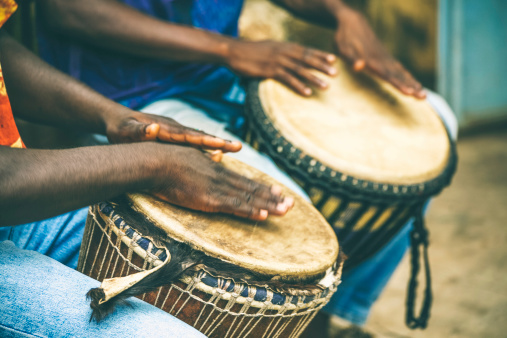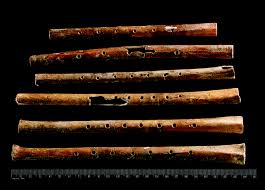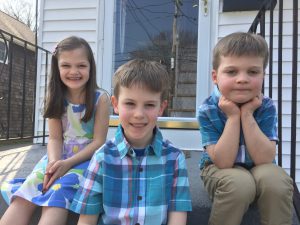Historians are often trying to answer the metaphorical question, “Which came first, the chicken or the egg?” Religious scholars are no exception in exploring when music and organized religion became forever linked. Over the next several months, we will explore this seemingly limitless topic. For the purposes of this series on religion and music, we will define religion as “a particular system of faith and worship.” Before we narrow the scope of this broad topic even more, however, we will try to define music and explore some of the earliest forms of music performed in a social context.
What is Music?
Music is an art form often defined by a “combination of vocal or instrumental sounds for emotional expression.” It is further described through a cultural standard of rhythm and melody, although many different societies and cultures may have very different ideas of those characteristics. The two basic elements of music that define melody are pitch and rhythm in succession to form a sentence or clause called a melodic phrase. Most Western civilizations have also included harmony and tone color in the cultural standards of music, and claim that melody itself intrinsically includes the other three elements. As with all art forms, however, intention of the creator or the reception of those exposed may indeed be what defines it as music. Principles of good composition often apply, but when melody is mainly missing from a portion of a song or tune, more emphasis is often put on rhythm, chord progressions, and time signatures. Jazz musicians, along with rap artists, and other musicians know this very well.

Prehistoric Music and Worship
Prehistoric, or primitive music, often refers to that produced by preliterate cultures. Some Paleolithic archaeologists believed that Neanderthals used carving and piercing tools to construct crude musical instruments such as flutes, but recent discoveries have disputed that. However, the Aurignacian culture from the Swabian Alb region of Germany produced several flutes from vulture bones and mammoth ivory between 43,000 and 35,000 years ago. More advanced instruments, such as the seven holed flute and various stringed instruments appeared in India, and the largest collection of prehistoric musical instruments was found in China, dating back to 7000 and 6600 BCE. The discovery of prehistoric instruments does not necessarily establish the origins of music, as scientists hypothesize that Neanderthals may have made music by clapping their hands or slapping their bodies.

The Big Problem with Music
At this point it should be stated that the use of the term music is problematic in prehistory because the concept of music is so different throughout history and across cultures. Many languages include other actions or contexts in words for music – such as dance or religion. Furthermore, some cultures have certain music that intends to imitate natural sounds, while others use it for more practical functions, such as luring animals in the hunt. Therefore, it can be argued that the very first instrument was the human voice itself, which can adeptly make a variation of sounds including clicking, humming, and whistling. The transition from Prehistoric Music to Ancient Music is attributed to when musical cultures and practices developed in the literal world.
The Oldest Known Song in History
As the relationship of music and melody become more complex and controversial, so do the historical records of the earliest songs. While many ancient musical styles have been preserved in oral traditions, the earliest forms of written music are relatively more recent. A 4000-year-old Sumerian clay tablet includes musical notation, instructions, and tunings for a hymn honoring the ruler Lipit-Ishtar. But for a historical song with a given title, most historians agree that Hurrian Hymn No. 6, an ode to the goddess Nikkai around the 14th century B.C., as the world’s earliest melody. However, the oldest surviving musical composition is a A.D. Greek tune known as the Seikilos Epitaph, found on an ancient gravesite in Turkey and including musical notation as well as a short set of lyrics.
Music is art, and art is hard to define. While we debate the definitions of music and melody, tunes and songs, instruments and voice, what is agreed upon is that since written time, music has been a very important part of faith and worship. It has been engrained and used throughout time to express faith and teach parables and religious tenets. Over the next several months, we will explore how music became, and has remained, an important part of world religion. To narrow our scope throughout this endeavor even more, we will dedicate a separate discussion to each of the five major religions of the world – Buddhism, Christianity, Hinduism, Islam, and Judaism.







